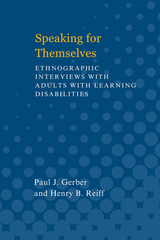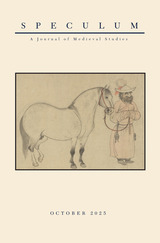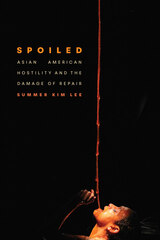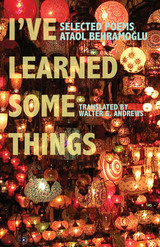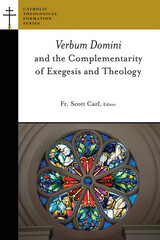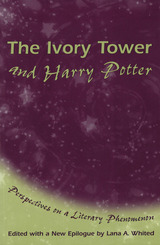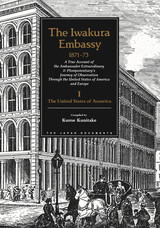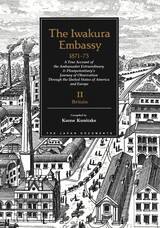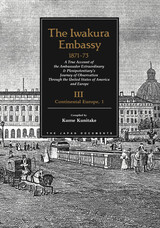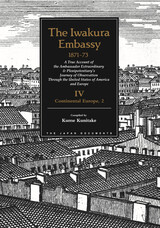 Ivan and Misha: Stories
Michael Alenyikov
Northwestern University Press, 2010 The linked stories in this powerful debut by Michael Alenyikov swirl around the titular fraternal twins and their father, Louie, as they make their way from the oppressive world of Soviet-era Kiev to the frenetic world of New York City in the late nineties and early aughts. Ivan, like his father, is a natural seducer and gambler who always has a scheme afoot between fares in his cab and stints in Bellevue for his bipolar disorder. Misha, more haunted than his brother by the death of their mother after their birth, is ostensibly the voice of reason.
Socially adrift, father and sons search for meaning in their divergent romantic relationships. Louie embarks on a traditional heterosexual dating relationship late in life, while Ivan is sexually opportunistic and omnivorous, and Misha,a young gay man, is torn between his family and the prospect of a committed relationship. The brothers’ search for connection leads them through a multitude of subcultures, all depicted in vivid detail. An evocative and frank exploration of identity, loss, dislocation, and sexuality, Ivan and Misha marks the arrival of a unique, authentic voice.
 Ivan Sergeevich Gagarin: The Search for Orthodox and Catholic Union
Jeffrey Bruce Beshoner
University of Notre Dame Press, 2002 Ivan Sergeevich Gagarin analyzes questions of nationality and religious identity in nineteenth-century Russian history as reflected in the life of Jesuit priest Ivan Gagarin. A descendant of one of Russia's most ancient and politically powerful families, Father Ivan Gagarin, S.J. (1814-1882), dedicated his life to creating a union between the Orthodox and Catholic churches that would preserve the dogmatic and traditional beliefs of both.
Traditional understandings of Russian identity have emanated from the perspective of the dominant Orthodox religion; this captivating study uses the unionist work of Gagarin to illumine Russia's national identity from the perspective of Roman Catholicism. Gagarin, who regarded his unionist proposals as necessary for the preservation of Russian stability, often found himself in opposition to the Russian Orthodox Church. While Gagarin believed that church union would preserve Russia from the threats of communism and revolution, the Russian Orthodox Church believed that union would mean the sacrifice of religious truth, ecclesial independence, and religious orthodoxy.
Jeffrey Beshoner's even-handed analysis reveals that the Roman Catholic Church presented its own share of barriers to attempts at church union. Ivan Sergeevich Gagarin examines Roman Catholic attitudes of superiority vis-Ã -vis the Russian Orthodox Church and argues that the nineteenth-century Roman Catholic Church simply did not possess the humility or respect for Eastern beliefs that church union required.
Despite the failure of his unionist activity, Gagarin exerted important influence on such contemporary and later Roman Catholic and Russian thinkers as Pope Pius IX, Alexei Khomiakov, and Vladimir Solovev. As the collapse of communism has permitted Russia to again seek its national identity in Russian Orthodoxy, Gagarin's ideas and perspectives on the relationship between national and religious identity continue to prove relevant.
JEFFREY BRUCE BESHONER received his Ph.D. in Russian history from the University of Notre Dame. He is currently a member of the Third Order Regular of Saint Francis of Penance in the Province of the Most Sacred Heart of Jesus. He resides in Washington, D.C., where he continues to pursue his interests in Russian religious thought and ecumenical history.
----------
"The strength of this book is found in the fact that it finally offers scholars the continuous account of the entire life and times of Gagarin together with a discussion of this work, all in one volume. Students of the Russian Jesuit will also be grateful for the complete listing of Gagarin's treatises, both major and minor." --Orientalia Christiana Periodica 2002
"...a fascinating story that will be of particular interest to readers who follow current efforts to reestablish the communion that will enable the Church to, in the words of John Paul II, ‘breathe again with both lungs.'" --First Things
"Beshoner presents a well-researched and evenhanded examination of the evolution of Gagarin's thought within the context of the political and theological debates of the time. He shows that the fascinating story of Gagarin, the Don Quixote of Catholicism (198), exemplifies the futility of all-encompassing projects for the nation's salvation. His book is richly documented, and he makes generous use of archival material from France, Italy, the Vatican, and Russia. The book is an important resource for scholars interested in the Westernizers/Slavophile controversy, in problems of Russian national identity, in mutual misconceptions between the Russian Orthodox Church and the Vatican, and in ecumenical politics in general." --Slavic Review
"Beshoner's meticulous analysis makes a valuable contribution to the scholarship on religious and church history in the middle decades of the nineteenth century. Above all, it provides a full, well-researched account of a prominent Russian Catholic publicist, stripping away rhetoric and polemics to give a coherent account of his views and how he came to them. ...[A] pioneering monograph." --American Historical Review
"[R]ichly detailed discussion ... full of materials likely to be new to scholars interested in pre-Reform Russia, in which Gagarin was formed, and the post-Reform Russia that he tried to influence. Beshoner has thoroughly investigated archival sources in Russia and the West and mastered the very large literature." --Russian Review
"...Jeffrey Bruce Beshoner surprises readers with an intriguing book that includes nationalism, diplomacy and religion. It provides a multifaceted look into the history of Russia compared with the rest of Europe during the nineteenth century. Beshoner's work transcends the history of nineteenth-century Russian Orthodoxy. It delves into nationalism, diplomacy, politics, and religion and would be an enlightening supplement to any Russian, nineteenth-century, or religious history course. Beshoner's wording is intelligent, yet not too academic for younger readers. He clearly defines and shows Gagarin's motives, writings, and experiences. Ivan Sergeevich Gagarin: The Search for Orthodox and Catholic Union would prove beneficial in graduate-level courses, as well as in some upper level undergraduate courses." --History: Reviews of New Books
"Beshoner's presentation of Gagarin is valuable and extensive. It gives us another historical example of a division within Christian experience that still troubles many." --Journal of the American Academy of Religion
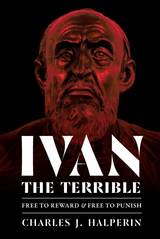 Ivan the Terrible: Free to Reward and Free to Punish
Charles J. Halperin
University of Pittsburgh Press, 2019
Ivan the Terrible is infamous as a sadistic despot responsible for the deaths of thousands of innocent people, particularly during the years of the oprichnina, his state-within-a-state. Ivan was the first ruler in Russian history to use mass terror as a political instrument. However, Ivan’s actions cannot be dismissed by attributing the behavior to insanity. Ivan interacted with Muscovite society as both he and Muscovy changed. This interaction needs to be understood in order properly to analyze his motives, achievements, and failures.
Ivan the Terrible: Free to Reward and Free to Punish provides an up-to-date comprehensive analysis of all aspects of Ivan’s reign. It presents a new interpretation not only of Ivan’s behavior and ideology, but also of Muscovite social and economic history. Charles Halperin shatters the myths surrounding Ivan and reveals a complex ruler who had much in common with his European contemporaries, including Henry the Eighth.
Ivar Kreuger and Jeanne de la Motte: Two Plays by Jerzy W. Tepa
Jerzy Tepa
Intellect Books, 2015 The 1930s were a period of triumph and turmoil in Poland, yet the decade saw the production of a number of exceptional dramatic works. Some dramatists of the period, among them Jerzy W. Tepa, are not well-known today because many of their plays were lost—or presumed to be lost—during the war years. However, the recent rediscoveries of Tepa’s Ivar Kreuger and Jeanne de la Motte allow a fascinating glimpse into a rich and vital period of Polish literary culture unfamiliar to most English readers and scholars. This book not only reintroduces Tepa and his work to new readers but also demonstrates why he was one of the leading voices of the Polish interwar era.
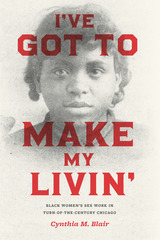 I've Got to Make My Livin': Black Women's Sex Work in Turn-of-the-Century Chicago
Cynthia M. Blair
University of Chicago Press, 2010 For many years, the interrelated histories of prostitution and cities have perked the ears of urban scholars, but until now the history of urban sex work has dealt only in passing with questions of race. In I’ve Got to Make My Livin’, Cynthia Blair explores African American women’s sex work in Chicago during the decades of some of the city’s most explosive growth, expanding not just our view of prostitution, but also of black women’s labor, the Great Migration, black and white reform movements, and the emergence of modern sexuality.
Focusing on the notorious sex districts of the city’s south side, Blair paints a complex portrait of black prostitutes as conscious actors and historical agents; prostitution, she argues here, was both an arena of exploitation and abuse, as well as a means of resisting middle-class sexual and economic norms. Blair ultimately illustrates just how powerful these norms were, offering stories about the struggles that emerged among black and white urbanites in response to black women’s increasing visibility in the city’s sex economy. Through these powerful narratives, I’ve Got to Make My Livin’ reveals the intersecting racial struggles and sexual anxieties that underpinned the celebration of Chicago as the quintessentially modern twentieth-century city.
 I've Had to Think Up a Way to Survive: On Trauma, Persistence, and Dolly Parton
Lynn Melnick
University of Texas Press, 2022 A moving and essential exploration of what it takes to find your voice as a woman, a survivor, an artist, and an icon.
The first time Lynn Melnick listened to a Dolly Parton song in full, she was 14 years old, in the triage room of a Los Angeles hospital, waiting to be admitted to a drug rehab program. Already in her young life as a Jewish teen in the 1980s, she had been the victim of rape, abuse, and trauma, and her path to healing would be long. But in Parton’s words and music, she recognized a fellow survivor.
In this powerful, incisive work of social and self-exploration, Melnick blends personal essay with cultural criticism to explore Parton’s dual identities as feminist icon and objectified sex symbol, identities that reflect the author’s own fraught history with rape culture and the arduous work of reclaiming her voice. Each chapter engages with the artistry and impact of one of Parton’s songs, as Melnick reckons with violence, misogyny, creativity, parenting, friendship, sex, love, and the consolations and cruelties of religion. Bold and inventive, I’ve Had to Think Up a Way to Survive gives us an accessible and memorable framework for understanding our times and a revelatory account of survival, persistence, and self-discovery.
I've Learned Some Things
By Ataol Behramoğlu
University of Texas Press, 2008 I've Learned Some Things allows English-language readers the rare opportunity to experience the work of Ataol Behramoğlu, one of Turkey's most celebrated poets. The sixty-six poems in this collection span the author's extraordinary career and are stunning examples of the intense emotional quality of his work. Behramoğlu celebrates the rich fabric of everyday life by exploring both personal and social struggles, sometimes employing a whimsical tone. Walter G. Andrews's skillful translation conveys the vibrancy of Behramoğlu's work to an English-language audience, and this bilingual edition allows Turkish-language readers to follow the original text.
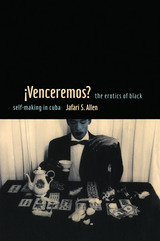 iVenceremos?: The Erotics of Black Self-making in Cuba
Jafari S. Allen
Duke University Press, 2011 Promoting the revolutionary socialist project of equality and dignity for all, the slogan ¡Venceremos! (We shall overcome!) appears throughout Cuba, everywhere from newspapers to school murals to nightclubs. Yet the accomplishments of the Cuban state are belied by the marginalization of blacks, the prejudice against sexual minorities, and gender inequities. ¡Venceremos? is a groundbreaking ethnography on race, desire, and belonging among blacks in early-twenty-first-century Cuba, as the nation opens its economy to global capital. Expanding on Audre Lorde’s vision of embodied, even “useful,” desire, Jafari S. Allen shows how black Cubans engage in acts of “erotic self-making,” reinterpreting, transgressing, and potentially transforming racialized and sexualized interpellations of their identities. He illuminates intimate spaces of autonomy created by people whose multiply subaltern identities have rendered them illegible to state functionaries, and to most scholars. In everyday practices in Havana and Santiago de Cuba—including Santeria rituals, gay men’s parties, hip hop concerts, the tourist-oriented sex trade, lesbian organizing, HIV education, and just hanging out—Allen highlights small but significant acts of struggle for autonomy and dignity.
Verbum Domini and the Complementarity of Exegesis and Theology
Scott Carl
Saint Paul Seminary Press , 2021 In Verbum Domini, his 2010 apostolic exhortation, Pope Benedict XVI challenged the church to keep theology firmly rooted in the study of Scripture. The essays collected here respond thoughtfully and concretely to that charge, together demonstrating that exegesis is essential to the theological task and to faith for scholars, students, and the broader Church.
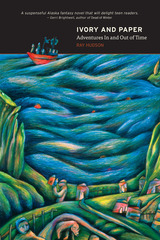 Ivory and Paper: Adventures In and Out of Time
Ray Hudson
University of Alaska Press, 2018 “You might be in danger.”
Thirteen-year-old Booker leads a sheltered life in Vermont—until a spellbinding relic throws him skidding into a world of magic and myths come to life. Anna is an Unangax̂ teenager looking for answers after her long-absent mother reappears in her life. When a mysterious bookmark brings them together on the Aleutian Islands, they’re sent on a dangerous quest to return a magical amulet to Anna’s Unangan ancestors. As they adventure across islands that glow like moonstones, they cross paths with nineteenth-century chiefs, the mysterious Woman of the Volcano, and the sinister Real Raven. While their journey is tinged with the fantastic, it’s based in real depictions of Unangan culture and history—the first historical novel set in Unangan folklore. It’s a coming-of-age-story that will resonate with young adult readers on their own journeys to discover their personal and cultural identities.
 Ivory Diptych Sundials, 1570–1750
Steven Lloyd, Penelope Gouk, A. J. Turner
Harvard University Press, 1992 During the sixteenth and seventeenth centuries, ivory diptych sundials were widely used to determine the time by day or night. These elaborate portable sundials, which could be adjusted for different latitudes, incorporated various devices useful for merchants and others who traveled extensively in Europe. This catalog illustrates in detail Harvard's collection of eighty-three ivory diptych sundials, one of the largest holdings of these instruments in the world. The collection encompasses a comprehensive array of styles and designs from Nuremberg, Paris, and Dieppe, the major centers of their production, as well as from other parts of Europe.
This catalog is the fourth publication of Harvard University's Collection of Historical Scientific Instruments, and the first to appear in twenty-two years. This collection, which was established in 1949 as a resource for the history of science and technology, has one of the three largest university holdings of its kind in the world. It comprises about 15,000 instruments covering a broad range of scientific disciplines dating from 1500 to the present. Illustrated catalogues of other parts of the collection are anticipated in the near future. These will include volumes on early telephones and phonographs, psychological instruments, and apparatus for teaching science in Colonial America.
The Ivory Tower and Harry Potter: Perspectives on a Literary Phenomenon
Edited, Intro, & Epilogue by Lana A. Whited
University of Missouri Press, 2004 Now available in paper, The Ivory Tower and Harry Potter is the first book-length analysis of J. K. Rowling's work from a broad range of perspectives within literature, folklore, psychology, sociology, and popular culture. A significant portion of the book explores the Harry Potter series' literary ancestors, including magic and fantasy works by Ursula K. LeGuin, Monica Furlong, Jill Murphy, and others, as well as previous works about the British boarding school experience. Other chapters explore the moral and ethical dimensions of Harry's world, including objections to the series raised within some religious circles. In her new epilogue, Lana A. Whited brings this volume up to date by covering Rowling's latest book, Harry Potter and the Order of the Phoenix.
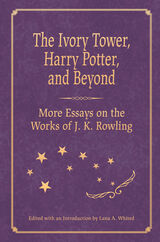 The Ivory Tower, Harry Potter, and Beyond: More Essays on the Works of J. K. Rowling
Edited with an Introduction by Lana A. Whited
University of Missouri Press, 2024 In her follow-up to The Ivory Tower and Harry Potter, Lana A. Whited has compiled a new collection of essays analyzing the books, films, and other media by J. K. Rowling. This includes pieces on the Harry Potter books and movies, Fantastic Beasts and Where to Find Them (films), The Cursed Child (play), as well as her writing outside the wizarding universe, such as The Ickabog, The Casual Vacancy, and the Cormoran Strike series. Many of the chapters explore works that influenced the Harry Potter series, including Classical epic, Shakespearian comedy and tragedy, and Arthurian myth. In addition to literary comparison, the volume delves into topics like political authoritarianism, distrust of the media, racial and social justice, and developments in fandom. It’s fair to say that much has changed in regard to Harry Potter and J. K. Rowling scholarship in the twenty years since the first volume’s publication. While it was once considered a universally beloved book series, the relationship between HP and its fans has grown more complicated in recent years. As its readers have grown older and Rowling’s reputation has wavered in the public eye, Whited and her contributors consider the complicated legacy of Harry Potter and its author and explore how the series will evolve in the next twenty years.
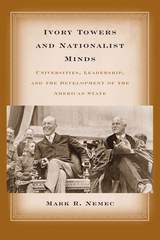 Ivory Towers and Nationalist Minds: Universities, Leadership, and the Development of the American State
Mark R. Nemec
University of Michigan Press, 2006 Ivory Towers and Nationalist Minds traces the rise of the great American universities through their formative years, 1862-1920, examining the role of these schools and their leadership in shaping American politics and public policy. Nemec's provocative study demonstrates that universities provided the intellectual and institutional apparatus needed to legitimize federal authority. His work challenges existing scholarship by documenting how the influx of academic expertise into the developing American state was fostered by campus entrepreneurs seeking to establish the social relevance of their institutions, rather than by the state itself.
"A wonderful, learned, and original work, full of present-day relevance. Essential reading for anyone interested in the history of higher education and its relation to professionalism and the growth of the modern state."
--Geoffrey Kabaservice, author of The Guardians: Kingman Brewster, His Circle, and the Rise of the Liberal Establishment
"Ivory Towers and Nationalist Minds contributes greatly to our understanding of the influence of the American university on public life, including the development of the modern American state. Nemec focuses on the universities working in concert to enhance their own influence and that of the state. This is not only a historical issue of interest-it has contemporary resonance. Institutions today compete intensely while cooperating regularly. And public universities like Michigan and California are expected, perhaps more than ever before, to contribute directly to the welfare of their states, especially in economic development."
--J. Douglas Toma, Associate Professor, Institute of Higher Education, University of Georgia
"Ivory Towers and Nationalist Minds fills an important void in the study of American political development and its relationship to the evolution of American higher education. Numerous historical case studies provide vivid evidence of how universities emerged as sources of national expertise and state-building at a critical juncture in our nation's history. Nemec demonstrates that such contributions were not historical inevitabilities, but the product of strategic actors seeking to simultaneously strengthen universities and serve a greater national purpose."
--Scott W. Allard, Brown University
Mark R. Nemec is a Vice President with Forrester Research in Cambridge, Massachusetts. He holds a BA from Yale, and both an MA in Education and a PhD in Political Science from the University of Michigan. He has served on the faculty of Davidson College and as a Senior Director of the Advisory Board Company in Washington, DC.
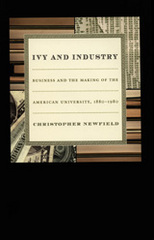 Ivy and Industry: Business and the Making of the American University, 1880-1980
Christopher Newfield
Duke University Press, 2003 Emphasizing how profoundly the American research university has been shaped by business and the humanities alike, Ivy and Industry is a vital contribution to debates about the corporatization of higher education in the United States. Christopher Newfield traces major trends in the intellectual and institutional history of the research university from 1880 to 1980. He pays particular attention to the connections between the changing forms and demands of American business and the cultivation of a university-trained middle class. He contends that by imbuing its staff and students with seemingly opposed ideas—of self-development on the one hand and of an economic system existing prior to and inviolate of their own activity on the other—the university has created a deeply conflicted middle class. Newfield views management as neither inherently good nor bad, but rather as a challenge to and tool for negotiating modern life. In Ivy and Industry he integrates business and managerial philosophies from Taylorism through Tom Peters’s “culture of excellence” with the speeches and writings of leading university administrators and federal and state education and science policies. He discusses the financial dependence on industry and government that was established in the university’s early years and the equal influence of liberal arts traditions on faculty and administrators. He describes the arrival of a managerial ethos on campus well before World War II, showing how managerial strategies shaped even fields seemingly isolated from commerce, like literary studies. Demonstrating that business and the humanities have each had a far stronger impact on higher education in the United States than is commonly thought, Ivy and Industry is the dramatic story of how universities have approached their dual mission of expanding the mind of the individual while stimulating economic growth.
The Iwakura Embassy, 1871-1873, Volume I: The United States of America
Kunitake Kume
MHM Limited, 2002 The newly established Meiji government sent a large delegation on a tour of Western countries to report on how Japan might modernize its political, economic, and social infrastructure. This embassy of some fifty top officials was headed by Iwakura Tomomi and included such luminaries as Ito Hirobumi and Kido Takayoshi. These emissaries journeyed to the United States and eleven European countries, making thorough investigations into each country's politics, military affairs, trade and industry, education, and culture. Their reports, which helped Japan emerge as a modern industrial nation, constitute an indispensable documentary resource. Volume I covers the departure of the Embassy from Yokohama, the Pacific crossing, the arrival in San Francisco, the wintry rail journey across the United States, the unexpectedly long stay in Washington, D.C., and the departure from Boston.
The Iwakura Embassy, 1871-1873, Volume II: Britain
Kunitake Kume
MHM Limited, 2002 The newly established Meiji government sent a large delegation on a tour of Western countries to report on how Japan might modernize its political, economic, and social infrastructure. This embassy of some fifty top officials was headed by Iwakura Tomomi and included such luminaries as Ito Hirobumi and Kido Takayoshi. These emissaries journeyed to the United States and eleven European countries, making thorough investigations into each country's politics, military affairs, trade and industry, education, and culture. Their reports, which helped Japan emerge as a modern industrial nation, constitute an indispensable documentary resource. Volume II covers the period of seventeen weeks from August 16th, 1872, when the ambassadors sighted the Irish coast after a ten-day crossing from Boston, to December 15th, the day before they left Britain for France.
The Iwakura Embassy, 1871-1873, Volume III: Continental Europe, 1
Kunitake Kume
MHM Limited, 2002 The newly established Meiji government sent a large delegation on a tour of Western countries to report on how Japan might modernize its political, economic, and social infrastructure. This embassy of some fifty top officials was headed by Iwakura Tomomi and included such luminaries as Ito Hirobumi and Kido Takayoshi. These emissaries journeyed to the United States and eleven European countries, making thorough investigations into each country's politics, military affairs, trade and industry, education, and culture. Their reports, which helped Japan emerge as a modern industrial nation, constitute an indispensable documentary resource. Volume III covers the first three and a half months of the journey across the Continent, recording the party's impressions in France, Belgium, Holland and Prussia.
The Iwakura Embassy, 1871-1873, Volume IV: Continental Europe, 2
Kunitake Kume
MHM Limited, 2002 "The newly established Meiji government sent a large delegation on a tour of Western countries to report on how Japan might modernize its political, economic, and social infrastructure. This embassy of some fifty top officials was headed by Iwakura Tomomi and included such luminaries as Ito Hirobumi and Kido Takayoshi. These emissaries journeyed to the United States and eleven European countries, making thorough investigations into each country's politics, military affairs, trade and industry, education, and culture. Their reports, which helped Japan emerge as a modern industrial nation, constitute an indispensable documentary resource. Volume IV covers the journeys made by the various members of the Embassy as they travelled through Russia, Denmark, Sweden, several of the German states, Italy and the Austro-Hungarian empire.
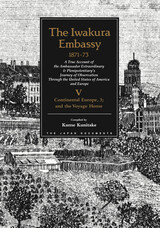 The Iwakura Embassy, 1871-1873, Volume V: Continental Europe, 3; and the Voyage Home
Kunitake Kume
MHM Limited, 2002 The newly established Meiji government sent a large delegation on a tour of Western countries to report on how Japan might modernize its political, economic, and social infrastructure. This embassy of some fifty top officials was headed by Iwakura Tomomi and included such luminaries as Ito Hirobumi and Kido Takayoshi. These emissaries journeyed to the United States and eleven European countries, making thorough investigations into each country's politics, military affairs, trade and industry, education, and culture. Their reports, which helped Japan emerge as a modern industrial nation, constitute an indispensable documentary resource. Volume V covers the ambassadors' visit to the Universal Exposition in Vienna, their travels in Switzerland, the few days they spent in Lyons and Marseilles, and their journey home, during which they travelled through the Mediterranean, the Suez Canal, the Arabian Sea, the Gulf of Bengal and the China Sea, calling at Aden, Galle (in Ceylon), Singapore (where a cholera epidemic prevented their landing), Saigon, Hong Kong and Shanghai.
 Iwo Jima: Monuments, Memories, and the American Hero
Karal Ann Marling and John Wetenhall
Harvard University Press, 1991 In the split second that it took Associated Press photographer Joe Rosenthal to snap the shutter of his Speed Graphic, a powerful and enduring American symbol was born. Iwo Jima: Monuments, Memories, and the American Hero tells the story of that icon as it appeared over the next forty years in bond drive posters, stamps, Hollywood movies, political cartoons, and sculpture, most notably the colossal Marine Corps War Memorial outside Washington, D.C. The book is also a brilliant and moving study of the soldiers who fought one of our bloodiest battles and of the impact of Iwo Jima on the rest of their lives.
When the famous photograph first appeared in newspapers in 1945 it was little more than a grainy outline of massed men and their wafting flag, but for millions it captured the essence of American grit and determination. The Marines pictured were in fact in no immediate danger—they were replacing a small flag planted earlier atop Mt. Suribachi with a larger, more visible one—but to an enthusiastic public they were heroes risking their lives for Old Glory. The Battle of Iwo Jima raged for many days beyond the capture of this one position, and ultimately claimed the lives of almost seven thousand American servicemen, yet already the tableau symbolized victory and, as a politician said at the time, “the dauntless permanency of the American spirit.”
With passion and meticulous care Karal Ann Marling and John Wetenhall illuminate the ironies and misconceptions that proliferated around the two Iwo Jima flag raisings. Pride and nostalgia exalted the glorious epiphany of Rosenthal’s image and suppressed the grisly and at times mundane reality of war. The ordinary men whose action had been immortalized became uneasy celebrities, while the planters of the first flag were doomed to oblivion. From John Wayne’s epic Sands of Iwo Jima to the gargantuan bronze boots of the War Memorial to the parade-floats of Mt. Suribachi done in sweet peas and orchid-colored pompoms, overwrought patriotism blended with true valor.
The authors weave a fast-paced and vivid story from the reminiscences of survivors, rare archival sources, and dozens of documentary photographs. They give the first comprehensive account of the building of the Marine Corps War Memorial, dedicated in 1954. And in a riveting final chapter they follow a group of American veterans who returned to the island in 1985 and met Japanese survivors. Dedicated to the men who fought on Iwo Jima, this groundbreaking study in cultural iconography transcends the icon to show the honor in remembering what really happened.
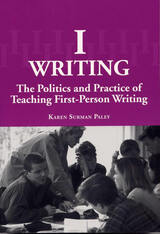 I-Writing: The Politics and Practice of Teaching First-Person Writing
Karen Surman Paley
Southern Illinois University Press, 2001 In this ethnographic study of the teaching of writing, Karen Surman Paley reveals the social significance of first-person writing and the limitations of a popular taxonomy of composition studies. Paley looks critically at the way social constructionists have created an “Other” in the field of composition studies and named it “expressivist.” Paley demonstrates the complexity of approaches to teaching writing through an ethnographic study of two composition faculty at Boston College, a programthat some would say is “expressivist.” She prompts her colleagues to consider how family experiences shape the way students feel about and treat people of races, religions, genders, and sexual preferences other than their own. Finally, she suggests to the field of composition that practitioners spend less time shoring up taxonomies of the field and more time sharing pedagogies.
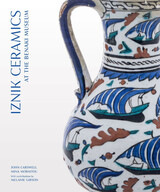 Iznik Ceramics at the Benaki Museum
John Carswell, Mina Moraitou, and Melanie Gibson
Gingko, 2023 The first publication to feature the full collection of Iznik ceramics at the Benaki Museum in Athens.
The Benaki Museum of Islamic Art in Athens has a substantial collection of Iznik ceramics, intricate works created in the city of Iznik in Asia Minor that are decorated with vibrant colors and designs. Although well known to many who visit the museum, this collection—which includes tableware, tiles, and sherds—has never before been published in its entirety.
Archaeologist, scholar, and curator John Carswell first began studying and cataloging these objects in the 1980s. This project has since been revived and guided to fruition by the curator of the Benaki Museum of Islamic Art, Mina Moraitou, who has also contributed a chapter on the Museum’s founder Antonis Benakis and the formation of its Iznik collection. The catalog brings together these admired and sought-after ceramics, featuring over three hundred illustrations of pieces from the Museum’s collection.
Izyaslav and Gertrude: The King and Queen of Rus’ at the Nexus of Medieval Europe
Christian Raffensperger
Harvard University Press Rus’ is traditionally seen as part of Ukrainian or Russian history, and rarely part of medieval European history. This work focuses on two well-known Rusian rulers, King Izyaslav and Queen Gertrude, and situates them in a larger medieval context. Their story progresses from their dynastic marriage, as part of an agreement between the rulers of Rus’ and Poland; to their rule in Rus’, including the power that Gertrude and Rusian women were able to wield and their cultural contributions; to their travels in Europe during exile, including to Gertrude’s family in Poland and the German Empire, as well as to the pope himself; and, finally, their ultimate fates and their impact on their descendants. Through Izyaslav and Gertrude, readers will see the Rusian royalty as not an eastern Other, but part of the broader complex of medieval European royalty.
Izzy: A Biography of I. E. Stone
Cottrell, Robert
Rutgers University Press, 1993
America's foremost left-wing journalist of the post-World War I era was I.F. "Izzy" Stone. At the time of his death in 1989, Stone had completed the passage he once predicted to his wife "from pariah to a character and then . . . a national institution." Now Robert Cottrell provides the first full-length biography of Stone, a fascinating story which parallels the story of the American Left. 12 illustrations.
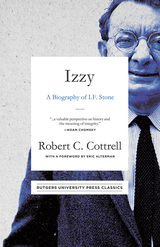 Izzy: A Biography of I. F. Stone
Robert C. Cottrell
Rutgers University Press, 2020 This is the classic story of the life and times of I. F. “Izzy” Stone. Robert Cottrell weaves together material from interviews, letters, archival materials, and government documents, and Stone’s own writings to tell the tale of one of the most significant journalists, intellectuals, and political mavericks of the twentieth century. The story of I. F. Stone is the tale of the American left over the course of his lifetime, of liberal and radical ideals which carried such weight throughout the twentieth century, and of journalism of the politically committed variety. Now available in a handsome new Rutgers University Press Classic edition, it is an examination of the life and career of a gregarious yet frequently grumpy loner who became his nation’s foremost radical commentator provides a window through which to examine American radicalism, left-wing journalism, and the evolution of key strands of Western intellectual thought in the twentieth century.
|
|
